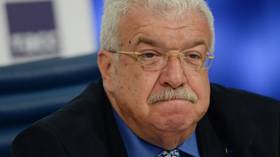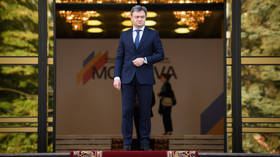10th anniversary of financial crisis sees Russian economy in better shape
August 17th marks the 10th anniversary of the Russian financial crisis. Nowadays, the world is gripped by another financial crisis – and that’s raised fears that it could drive Russia into replay of 1998. The 1998 default shocked the economy an
The events of a decade ago had their origins far away – in Thailand, when one of the so-called Asian Tigers devalued its currency. Fleeing Asia, investors looked for high returns elsewhere – and flooded into Russia. Mark Rubinstein, Banking Analyst at Metropol, says some Asian currencies had become overvalued.
“Some countries in the world – the crisis started in Asia – they overestimated their economic possibilities – their currencies appreciated too much at some point.”
But the collapse of the Asian Tigers hit demand for commodities. Exports of oil, gas and metals dominated the Russian economy. Keen to borrow, the government issued short-term bonds – the so-called GKOs – and foreign investors snapped them up. But the Russian government was only able to repay its creditors by issuing new bonds. It was in effect a pyramid scheme, in which international investment banks were keen participants. A further problem according to Oleg Vyugin, Deputy Finance Minister from 1996-1999 was the overvalued Rouble.
“To make matters worse, the central bank kept the Rouble too strong – around six to the dollar. Exporters were suffering and salaries and taxes went unpaid.”
On August 17 1998, the Russian government devalued the Rouble. Investors took fright and the Russian stock market tumbled – accelerating the Rouble’s decline. Within days it was trading, not at 6 to the dollar, but 21.
The currency devalued by two-thirds, slashing the value of bank deposits and people’s savings. President Boris Yeltsin dismissed the government led by then prime minister Sergey Kirienko. Neil Withers, Advisor to the CEO at, Vozrozhdenie Bank says the crisis unfolded quickly and exposed weaknesses in the Russian banking system.
“I was here for a year before the default happened. I didn’t really see it coming. In retrospect what it was – was the banking system was actually the weakest. There were a good number of banks that disappeared, that didn’t have the resources to pay back the depositors.”
People stormed the banks trying to withdraw their money. Many businesses collapsed – unable to pay staff or their creditors. Even today, many Russians have a lasting suspicion of banks.
Surprisingly, the Russian economy recovered relatively quickly. The devaluation hurt savers – but it cut the price of Russian exports, allowing competitive companies to quickly rebuild.
Experts say, it was a test of Russia’s resilience and it has learned the lesson. Ten years on, the Russian economy is growing strongly. So far it’s been able to withstand history’s latest twist of fate – the global financial crisis that began in 2007.











